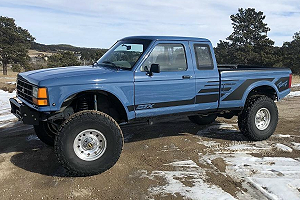@A4LD_Nghtme ,
The method I was taught to identify optimal timing was on a Chevy 350. One day after performing a full tune up, I asked my mechanical mentor if there is any reason not to employ the same technique to the Rangers 2.9L. His reply was it couldn't hurt to try.
Here is the process:
• start the engine and let it warm up to normal operating temperature, then turn off the engine.
• loosen the distributor cap, disconnect the SPOUT plug.
• install a timing light and a vacuum gage.
• start the engine and power all electrical loads that are normally on, example lights, stereo a/c.
• advance the timing until the vacuum reaches the highest value, once at the highest level of vacuum, if the timing is advanced more the vacuum gage's needle will first flutter, then the value will begin to decrease.
• retard the timing to less than the max value, then again advance the timing to just before the previously observed Max value.
• turn off the loads, turn off the engine, reconnect the spout and secure the distributor cap.
This is the optimal timing for the best performance and fuel economy. I will advice that with increased timing there is increased heat to control. Ensure your cooling system is 100% and I recommend the use of an oil cooler to give an extra cooling potential to your engine.
While I didn't measure the output on a Dyno, I observed improved fuel economy, throttle response with overall improved engine power during acceleration and on inclines.
The other thing worth noting is that the vacuum with the manufacturer's recommended timing was around 17 but when set for optimum vacuum it was 28. I don't remember what the timing advance value was/is as I adapted this timing method for all my 2.9's from there on out.













